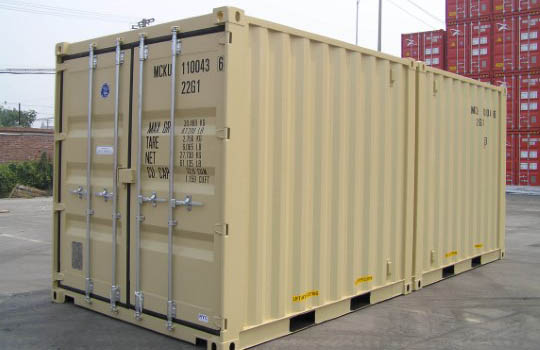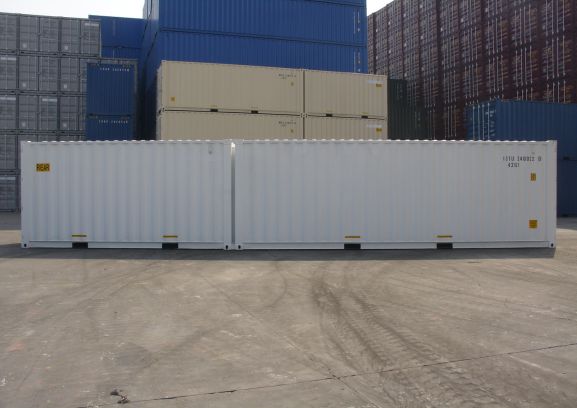I. Introduction
Combined containers for shipping and storage are innovative solutions that integrate multiple types of containers into a single unit, offering enhanced versatility and efficiency in logistics operations. These containers combine the features of different container types, such as dry van containers, refrigerated containers, and open-top containers, to meet diverse shipping and storage requirements.
The increasing trend in using it is driven by the need for more flexible and cost-effective solutions in the logistics industry. Traditional containers are often limited in their functionality, requiring multiple containers for different types of cargo. They streamline operations by providing a single container that can accommodate various cargo types, reducing the need for multiple containers and optimizing space utilization.
Additionally, they offer benefits such as improved cargo security, reduced handling costs, and enhanced environmental sustainability. As companies seek more efficient ways to transport and store goods, the demand for it is expected to continue growing.

II. Cost Efficiency
Combined containers offer significant cost-saving benefits compared to traditional shipping methods. Here’s a detailed look at how they can help reduce costs for shipping and storage:
1. Comparison of Costs: Using it can result in cost savings compared to traditional shipping methods. Traditional shipping often requires separate containers for different types of cargo, which can be costly. In contrast, combined containers allow for the transportation of multiple types of cargo in a single container, reducing the need for additional containers and associated costs.
2. Reduced Transportation Costs: They can help reduce transportation costs by maximizing the use of available space. By combining different types of cargo in a single container, companies can minimize empty space and transport more goods in each shipment. This leads to fewer shipments and lower transportation costs overall.
3. Storage Cost Savings: They can also help save on storage costs. Traditional shipping containers often require separate storage facilities for different types of cargo. With combined containers, companies can store multiple types of cargo in a single container, reducing the need for additional storage space and associated costs.
4. Efficient Use of Resources: Using it allows for more efficient use of resources, such as labor and equipment. Companies can streamline their operations by using fewer containers and reducing the need for multiple handling processes. This can result in cost savings and increased efficiency in the shipping and storage process.
5. Flexibility and Adaptability: They offer greater flexibility and adaptability compared to traditional shipping methods. They can be customized to accommodate different types of cargo, making them suitable for a wide range of industries and applications. This flexibility allows companies to adapt to changing shipping needs and requirements, resulting in cost savings and improved efficiency.
III. Space Optimization
Combined containers are innovative solutions that optimize space during shipping and storage by combining multiple functionalities within a single container. These containers are designed to accommodate different types of cargo, including dry goods, refrigerated items, and hazardous materials, in separate compartments or sections. By utilizing the available space more efficiently, they can reduce transportation costs and maximize the use of available storage space.
One example of how businesses can benefit from utilizing space more effectively with it is in the transportation of mixed goods. Instead of using multiple containers to transport different types of cargo, businesses can use a single combined container to transport a variety of goods, reducing the overall number of containers needed and saving on shipping costs. For example, a combined container could be used to transport both dry goods and refrigerated items, allowing businesses to consolidate their shipments and optimize space.
Another example is in the storage of goods at warehouses or distribution centers. They can be used to store different types of goods in separate compartments, allowing businesses to organize their inventory more effectively and reduce the amount of space needed for storage. This can lead to cost savings and increased efficiency in inventory management.

IV. Versatility and Flexibility
Combined containers offer a high degree of versatility and flexibility, making them ideal for accommodating various types of cargo and adapting to different transport modes. One of the key advantages of it is their ability to be customized to meet specific shipping requirements. These containers can be modified to include features such as temperature control, ventilation, and specialized fittings to accommodate different types of cargo, including perishable goods, hazardous materials, and oversized items.
In addition to their versatility in cargo accommodation, they are also highly flexible in terms of transportation modes. These containers can be easily transferred between different modes of transport, such as trucks, trains, and ships, without the need for costly and time-consuming loading and unloading processes. This flexibility makes combined containers an efficient and cost-effective solution for multimodal transportation, allowing goods to be transported seamlessly across different regions and countries.
Furthermore, they are designed to maximize space utilization and minimize wasted space. The modular design of these containers allows them to be stacked and nested efficiently, reducing the need for additional storage space and lowering transportation costs. This space-saving feature makes it an attractive option for businesses looking to optimize their logistics operations and reduce their environmental footprint.
V. Security and Durability
Combined containers, also known as intermodal containers, are designed to be secure and durable, ensuring the safe transport and storage of goods. These containers are equipped with various security features to protect against theft, tampering, and damage. Additionally, their construction and materials make them highly durable, capable of withstanding the rigors of transportation and storage.
One of the key security features of it is the use of tamper-proof seals. These seals are designed to prevent unauthorized access to the container and indicate if the container has been tampered with during transit. Tamper-proof seals are typically made of strong materials such as metal or high-strength plastic and are designed to break if tampered with, making it evident that the container has been compromised.
In addition to tamper-proof seals, they are also equipped with locking mechanisms to further enhance security. These locking mechanisms can vary in complexity, from simple padlocks to more advanced electronic locks. Electronic locks may be equipped with features such as remote monitoring and tracking, allowing for real-time monitoring of the container’s security status.
They are also designed to be highly durable, capable of protecting goods from external elements and rough handling during transport. These containers are typically made of steel, aluminum, or composite materials, providing strength and durability while remaining lightweight. The construction of combined containers is designed to withstand the stresses of transportation, including stacking, handling, and exposure to the elements.
Furthermore, they are designed to be weatherproof, protecting goods from moisture, dust, and other environmental factors. They are also designed to be impact-resistant, minimizing the risk of damage to goods during transport. Overall, they are a secure and durable solution for transporting and storing goods, offering peace of mind to shippers and recipients alike.
VI. Conclusion
Combined containers offer a versatile and efficient solution for shipping and storage needs. With their ability to accommodate different types of cargo and maximize space utilization, they provide numerous benefits such as cost savings and improved efficiency. Businesses are encouraged to consider incorporating combined containers into their logistics strategies for enhanced operations.
CIMC Yang Zhou Base is a leading manufacturer of combined container and various other standard and special logistics equipment. With years of experience in the industry, it focuses on the design, production and distribution of high-quality innovative products that meet the specific needs of customers.
If you need high-quality and innovative logistics equipment, including refrigerated containers, cold chain equipment, containerized equipment integration, modular buildings, etc., База CIMC Ян Чжоу is your best choice. Welcome inquiries from customers all over the world and look forward to the opportunity to cooperate with you.


